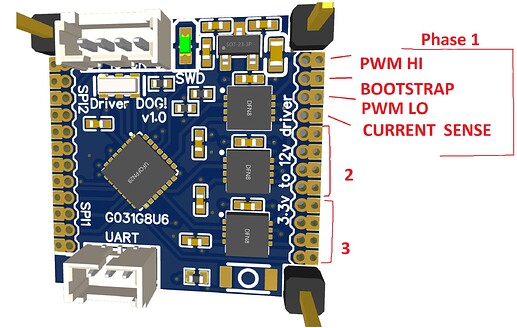Now Evtol flies on PWM, in some cases we have 11 separate devices for each of which you need to install signal lines physically through the wings, fuselage, detachable connections …
Also, turning nodes limit the resource of a large bundle of wires, if you use sliprings, this will definitely limit the use of analog control protocols.
In addition, if the signal lines are not groud-shielded, then sometimes interference will appear, in the form of twitches, especially when the carbon propeller rotates over the blades at a some frequency that produce electrostatic.
In this case, it is much more convenient, in my opinion, to extend one CAN bus to control many devices, and also get feedback. + control accuracy is limited only by the capabilities of the MCU that really cool.
And the ability to configure each device separately.
My ultimate goal is to move from PWM to CANUAV.
I can buy a ready-made drive from Hitec, but here’s why I won’t do it:
- classic gear engagement
- inability to work with dynamic loads
- low resource, less than 50 hours of work in my use-case
- 1.5 - 3 teeth are involved in the engagement of gears
- changes angular velocity with temperature drift
- because a large specific load on the tooth, a grease is needed that slows down operation at low temperatures (without feedback, the autopilot does not know at what angle the mechanics is turned, which leads to a crash in the worst case)
- no feedback
- need to know the current position
- power
- no holding torque control to adjust propeller damping during operation
So I started to develop my own wave drive, I have a good knowledge of mechanical engineering, I can make my high precision metal parts with 4 axis milling machine, the machining accuracy that I can now achieve > 0.005mm. It is important that for me it is cheap, because. I do it myself.
Now, thanks to you guys, I saw that the electrical part is possible, its size is not as important as the ability to make boards of its own shape, this is important when designing eVthol, so I can’t use ready-made parts because I don’t like their form factor, I just can’t arrange it like this as I need.
I don’t need a ready-made driver of a small size, because I still have to redo it, I need an understanding of what components are needed and a schematic diagram of their connection, because i never worked with it ![]()
now i see it like this
- metal micro wave reducer 1:30 (I will develop and make it myself) after i want to do it in mass plastic production for community
- FOC motor control with feedback (now I’m waiting for AS5047P)
- position control of wave reducer by AS5600
- consumption no more than 1A typical now I see 0.2A ( bldc 2204 15 Ohm per phase, now i have 40 Ohm) After i want create own cheap design by ferromagnetic SLM printing
- voltage 16 * 24 V (this is the battery operating range in flight)
- communication via СAN UAV but for first test PWM
GitHub - 107-systems/107-Arduino-Cyphal: Arduino library for providing a convenient C++ interface for accessing OpenCyphal. - MCU ? now i have blue pill with original F103C8 for experiment but esp is complitelly cheap and better?







